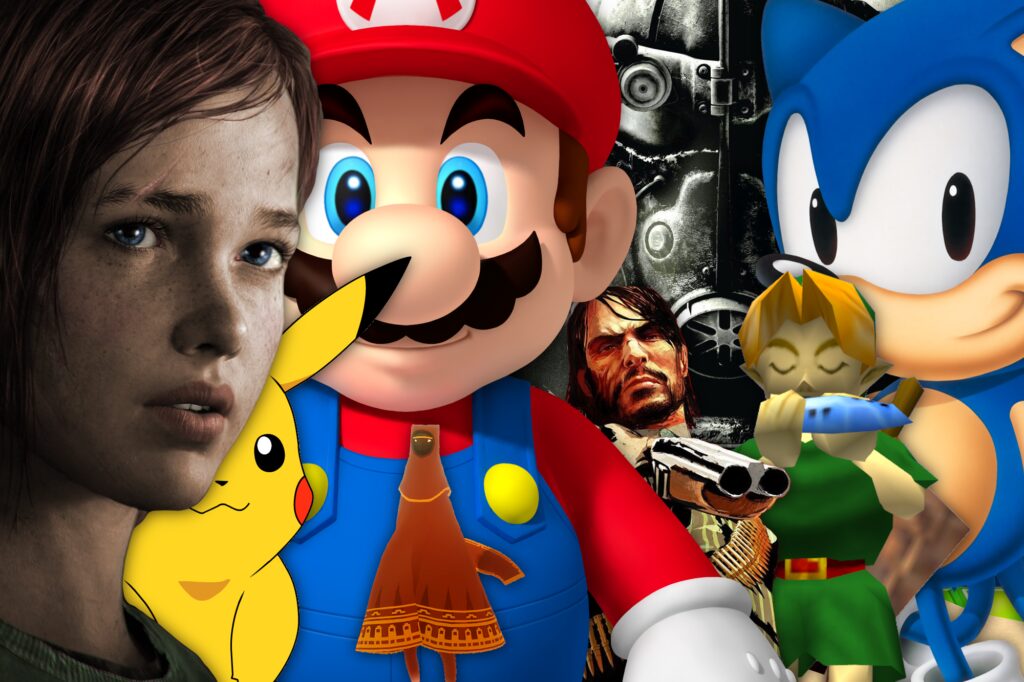Gaming music has evolved from the chiptune soundtracks of the early days to epic orchestral scores and licensed popular music of the modern era. Chiptune music was an essential part of early gaming, with memorable melodies that stayed with players long after they stopped playing. As gaming technology has advanced, so has gaming music, with the 16-bit era seeing improvements in sound quality and the 32-bit era marking a turning point, with composers creating immersive soundscapes that added to the overall gaming experience. Today, many soundtracks feature full orchestral arrangements, licensed popular music, and dynamic soundscapes designed to enhance esports competitions.
Gaming Music: From Chiptune to Epic Orchestral Scores, the Evolution of Gaming Soundtracks
Gaming music has come a long way since the early days of chiptune soundtracks. With advancements in technology, gaming music has evolved to include epic orchestral scores, memorable sound effects, and even licensed popular music. In this article, we will explore the history of gaming music and how it has evolved over the years.
The Early Days: Chiptune Soundtracks
The early days of gaming music were defined by chiptune soundtracks. Chiptune music is composed using sound chips from vintage computers and gaming consoles such as the Commodore 64, NES, and Sega Genesis. These sound chips were limited in their capabilities, resulting in a distinct 8-bit sound.
Chiptune music was an essential part of early gaming experiences. These soundtracks were simple but catchy, with memorable melodies that stayed with players long after they stopped playing. Some of the most iconic chiptune soundtracks include the Super Mario Bros theme, the Tetris theme, and the theme from Sonic the Hedgehog.
The 16-Bit Era: Advancements in Technology
As gaming technology advanced, so did gaming music. The 16-bit era saw improvements in sound quality, with consoles such as the Super Nintendo and Sega Genesis featuring better sound chips and more sophisticated soundtracks.
In addition to chiptune music, composers began incorporating more advanced musical techniques into their soundtracks. The result was a more nuanced sound, with memorable melodies and intricate harmonies. Some notable soundtracks from the 16-bit era include Chrono Trigger, Donkey Kong Country, and Castlevania: Symphony of the Night.
The 32-Bit Era: A New Level of Immersion
The 32-bit era marked a turning point in gaming music. With the advent of CD-ROM technology, consoles such as the Playstation and Sega Saturn could store much more data, allowing for higher quality soundtracks with greater depth and complexity.
Composers took advantage of this increased storage space to create immersive soundscapes that added to the overall gaming experience. Soundtracks from this era included ambient soundscapes, haunting melodies, and even full orchestral arrangements.
One notable soundtrack from this era is the Final Fantasy VII soundtrack. Composed by Nobuo Uematsu, the Final Fantasy VII soundtrack features lush orchestral arrangements and memorable melodies that are still beloved by fans today.
The Modern Era: Epic Orchestral Scores and Licensed Music
Today, gaming music has reached new heights, with many soundtracks featuring full orchestral arrangements and licensed popular music. The rise of esports has also led to the creation of dynamic soundtracks that are designed to enhance the excitement of competitive gaming.
One example of a modern game with an epic orchestral soundtrack is The Elder Scrolls V: Skyrim. Composed by Jeremy Soule, the Skyrim soundtrack features a full orchestra and choir performing sweeping, cinematic arrangements that perfectly capture the game’s epic scope.
Another trend in modern gaming soundtracks is the use of licensed popular music. Games such as the Grand Theft Auto series and the Tony Hawk’s Pro Skater series feature soundtracks composed entirely of popular music, adding to the overall atmosphere and mood of the game.
Conclusion
Gaming music has come a long way since the early days of chiptune soundtracks. With advancements in technology, gaming soundtracks have evolved to become an essential part of the overall gaming experience. From catchy chiptune melodies to epic orchestral scores and licensed popular music, gaming soundtracks have the power to transport players to new worlds and heighten their gaming experiences.
